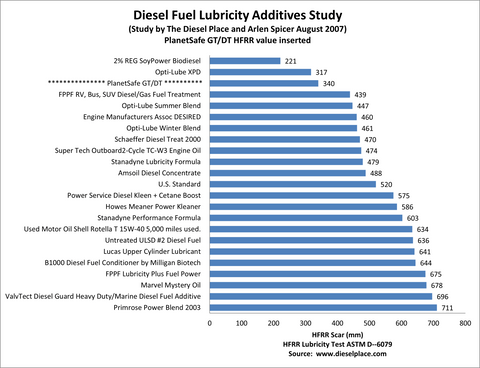Diesel Lubricant Comparisons | HFRR Test Wear Scar Comparisons PlanetSafe Fuel Treatments
Diesel fuel and other fluids are tested for lubricating ability using a device called a “High Frequency Reciprocating Rig” or HFRR. The HFRR is currently the Internationally accepted, standardized method to evaluate fluids for lubricating ability. It uses a ball bearing that reciprocates or moves back and forth on a metal surface at a very high frequency for a duration of 90 minutes. The machine does this while the ball bearing and metal surface are immersed in the test fluid (in this case, treated diesel fuel). At the end of the test the ball bearing is examined under a microscope and the “wear scar” on the ball bearing is measured in microns. The larger the wear scar, the poorer the lubricating ability of the fluid. The independent lab runs every sample twice and averages the size of the wear scar.
HFRR Standards:
The U.S. standard for diesel fuel says a commercially available diesel fuel should produce a wear scar of no greater than 520 microns.
The Engine Manufacturers Association had requested a standard of a wear scar no greater than 460 microns, typical of the pre-ULSD fuels. Most experts agree that a 520 micron standard is adequate, but also that the lower the wear scar the better.
In the following comparison chart you will see how PlanetSafe-FT and PlanetSafe-DT compare with popular additives on the market.


